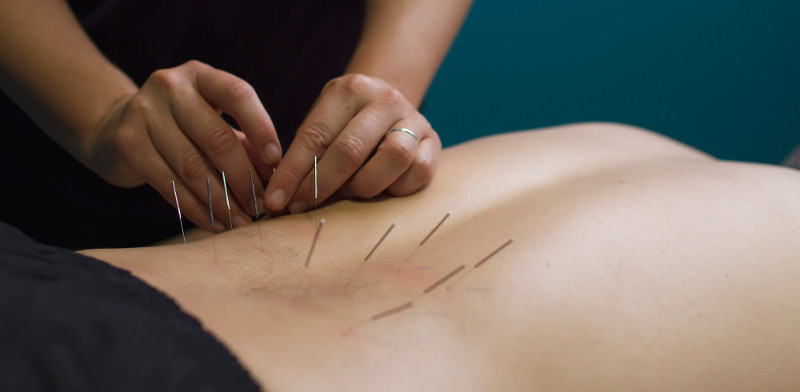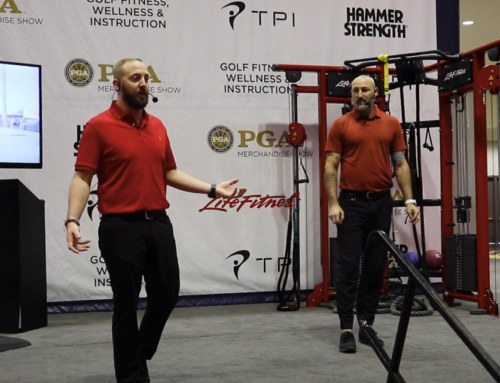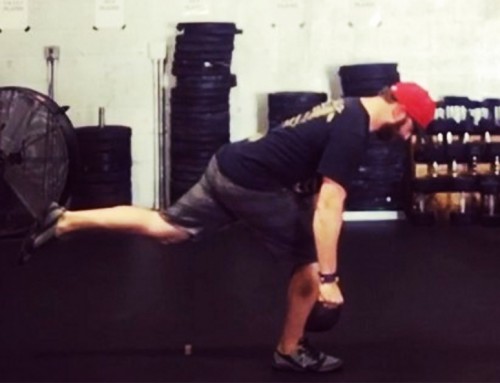Here’s What You Need To Know…
1. The practice of Dry Needling has been around for decades and continues to improve Neuro-Musculo-Skeletal function. As these techniques, methods improve, so do the practitioners skill set, making this treatment strategy one of the most effective in the world of rehabilitation.
2. The advancements in dry needling has lead to a number of different models and methods including the myofascial trigger point model, the radiculopathy model and the spinal segmental sensitization model, all which are used to treat the presence of pain or dysfunction.
3. The primary goal of Dry Needling is to desensitize supersensitive structures, to restore motion and function and to possibly induce a healing response to the tissue. For seasoned practitioners, Dry Needling is extremely beneficial for quick and tangible results on top of other movement remediations.
4. Dry Needling is completely different from Acupuncture. Dry Needling is technique to treat the neuromusculoskeletal systems based on pain patterns, muscular dysfunction, and other orthopedic signs and symptoms which depends upon physical examination and assessment to guide the treatment. Acupuncture is a technique for balancing the Flow of Energy or Life Force, known as Qi or Chi, believed to flow through meridians, pathways, in your body.
5. If you are skeptical of Dry Needling, there is indeed a reason why world class athletes from around the globe are being treated for pain and dysfunction using this technique. And as the physical therapy and chiropractic scopes of practice continue to widely accept this practice, we will continue to see marked improvements in practice and possibly the emergence of Dry Needling as a gold standard soft tissue and neuromuscular technique.
The History and Foundation of Dry Needling
The history of Dry Needling (DN) dates back to the 1940’s with Dr. Janet Travell. She identified the muscular trigger points and referral patterns that were elicited with the “wet needling.” Later, she discovered that “Dry Needling” offered the same results. This was groundbreaking work and hence she created the name “Dry Needling.” She and Dr. David Simon carefully identified most of the trigger points located in the human body. Thus, the first generation of modern Dry Needling was established (1).
“Wet Needling” is when a substance (supplement or medication) is introduced to the body via a hypodermic needle. “Dry Needling” involves a physical assessment and is an intervention for neuromusculoskeletal conditions as developed and described by Janet Travell MD, David Simons MD, Dr. C. Chan Gunn and others. It uses small monofilament needles to reactive trigger points and “loosen” shortened muscles. This treatment likely affects the immune, inflammatory, biomechanics, vascular and neurological systems (2).
The APTA (American Physical Therapy Association) states Dry Needling is a skilled intervention that uses a thin filiform needle to penetrate the skin and stimulate underlying myofascial trigger points, muscular, and connective tissues for the management of neuromusculoskeletal pain and movement impairments. Dry Needling is a technique used to treat dysfunctions in skeletal muscle, fascia, and connective tissue, and, diminish persistent peripheral nociceptive input, and reduce or restore impairments of body structure and function leading to improved activity and participation (3).
Dry Needling has had several names that Clinicians seem to utilize: TDN (Trigger Point Dry Needling), IMS (Intramuscular Stimulation), IMT (Intramuscular Manual Therapy), FDN (Functional Dry Needling) and several others.
In the United States, Physical Therapists, Chiropractors, Osteopaths, Medical Doctors, Naturopaths and Acupuncturists are utilizing Dry Needling.
Depending on the State you live in and your professional degree of choice, you may be able to practice Dry Needling and/or Acupuncture. Check out your State’s Scope of Practice for PT’s: Scope of Practice. Check out your State’s Scope of Practice for Chiro’s: Scope of Practice.
Popular Dry Needling Theories
MTP Model (Myofascial Trigger Point): Dry Needling is used primarily in the treatment of myosfascial trigger points (MTrPs) defined as “hyperirritable spots in skeletal muscle associated with hypersensitive palpable nodules in a taut band.” While Dr. Janet Travell is generally credited for bringing MTrPs to the attention of health care providers, MTrPs have been described and rediscovered for several centuries by various clinicians and researchers (4).
Radiculopathy Model: Dr. Chan Gunn developed his Radiculopathy model based off Cannon’s Law of Denervation Supersensitivity and coined the term “intramuscular stimulation.” This model is a developed system for the diagnosis and treatment of myofascial pain syndrome (2).
Spinal Segmental Sensitization Model: Dr. Andrew Fischer created a Model, which utilizes the works of Travell and Simons’ Trigger Point Model, and Gunn’s Radiculopathy Model. According to Fischer, the most effective methods for relief of musculoskeletal pain include pre injections blocks, needle and infiltration of tender spots and trigger points, somatic blocks, spray and stretch methods and relaxation exercises (5).
Benefits of Dry Needling

Dry Needling is becoming a popular modality in medical practices, as musculoskeletal complaints are one of the most reported conditions to seek medical attention.
Musculoskeletal diseases affect more than one out of every two persons in the United States age 18 and over, and nearly three out of four age 65 and over. Trauma, back pain, and arthritis are the three most common musculoskeletal conditions reported, and for which health care visits to physicians’ offices, emergency departments, and hospitals occur each year. (6) This increase in occurrence of musculoskeletal pain is causing people to search for good manual therapists with a plethora of modalities, including Dry Needling, to fix their pain quickly.
According to Kinetacore, the primary goal of Dry Needling is to desensitize supersensitive structures, to restore motion and function and to possibly induce a healing response to the tissue. This goal of treatment will allow you to treat and help a broad spectrum of patients from Chronic Pain Syndrome to MS (Multiple Sclerosis) to Sprain/Strain Injuries (The list could go on).
A Dry Needling Therapist can “feel” with the needle and utilize it as a diagnostic instrument. Dry Needling is often extremely helpful as tight muscles, contractures and trigger points are invisible to X-rays, MRI, CT’s. Contractures deep in the muscles can be felt with the needle via feedback on the quality of the tissues that it is penetrating. I utilize Dry Needling as a diagnostic and therapeutic tool similar to the Graston Technique. From a manual therapist standpoint, it is amazing what you can “feel” in the tissue when you have a needle extending through the deep layers of muscle and fascia. When I penetrate through chronic and fibrotic tissue, it feels very “gooey” to me. It feels very similar to some old school Silly Putty. I can tell that this is an area of muscle amnesia that needs to be woken up, stimulated and re-educated.
Difference Between Dry Needling and Acupuncture

Dry Needling is technique to treat the neuromusculoskeletal systems based on pain patterns, muscular dysfunction, and other orthopedic signs and symptoms. Dry Needling depends upon physical examination and assessment to guide the treatment; moreover, this allows you to test and re-test after a Dry Needling treatment has been performed. It gives you the opportunity to show tangible changes pre and post treatment. This allows for good objective information to show the patient or client their improvements in a quick fashion.
Traditional Chinese Medicine explains Acupuncture as a technique for balancing the Flow of Energy or Life Force, known as Qi or Chi, believed to flow through meridians, pathways, in your body. By inserting needles into specific points along these meridians, Acupuncture Practitioners believe that your Energy Flow will re-balance (7). Based off my knowledge of Acupuncture, this is a very brief explanation of what Acupuncture really is.
A monofilament needle is the only thing that is related in TCM Acupuncture and Dry Needling. There are similarities but very significant differences between TCM style of Acupuncture and Dry Needling. Acupuncture follows rules and beliefs, which have been established since early times. Whereas Dry Needling does not follow the Acupuncture philosophy. Most if not all of the TCM is based on pre-scientific ideas whereas, Dry Needling is totally based on modern scientific, neurophysiology and anatomy. Dry Needling provides pain relief and is based on recent understanding of pain science, there is much less mystique surrounding Dry Needling concern pain abatement by the scientific community. TCM Acupuncture can rest a vast range of tomato viscera illnesses as well as being effective in pain relief (8).
Athletes Want More Than Pain Relief

We know that Dry Needling acts locally, segmentally and systemically on the body. For Example, when a Needle is introduced to the human body, local reactions occur at the point of penetration. The body reacts in such a way that it releases cytokines, substance P and CGRP (Calcitonin Gene Related Peptide). Where the needle penetrates the skin, the body releases CGRP, which causes a cascade of reactions resulting in vasodilation, increased blood vessel formation, and increased tissue repair. In addition, the body will react in such a way that segmentally, at the spinal level, an Enkephalin release will occur resulting in a local pain response. Moreover, a Beta Endorphin release from the brain creating an analgesic affect will result in an overall systemic response. Performance and Injury Prevention is all about Recovery!
One of Many Clinical Success Stories
I had an athlete who came in with complaints of lateral knee pain with Multi-Segmental Flexion and Squatting. He was unable to touch his toes with Multi-Segmental Flexion and unable to break parallel in his Squat Pattern when I assessed him with the Selective Functional Movement Assessment (SFMA). Based off the Patient’s SFMA, biomechanical evaluation, signs, symptoms and palpable trigger points, I decided to Dry Needle his Glutes, Quads and Calf, specifically gluteus medius, gluteus minimus, vastus lateralis, rectus femoris and gastrocnemius.
Videos of Functional Dry Needling
In this video, you will see a “twitch response” in the quad muscle. The “twitch response” is an involuntary contraction caused by pistoning, moving the needle up and down, in to his quad trigger points.
In this video, you will see a “twitch response” in the calf muscle. The “twitch response” in this video is elicited via a Pointer Plus Excell II (0-16Hz). This has a similar response to the pistoning “twitch response”.
The Local Twitch Response (LTR) is an involuntary spinal reflex contraction of muscle fibers within a taut band during needling. Research shows that biochemical changes occur after a LTR, which correlate with a clinically observed decrease in pain and tenderness after MTP release by Dry Needling (9).
Videos of Pre-Post Changes after a Dry Needling Treatment
Here are some pre-treatment videos taken from a multi-segmentation flexion pattern of a patient. There is both a front and side view to check out the toe touch depth along with the curvature of the spine in addition to the pelvic tilt.
Pre-Treatment Front View
Pre-Treatment Side View
And after only a Dry Needling treatment session, this is the post-treatment multi-segmental flexion pattern from both the side and the front.
Post-Treatment Front View
Post-Treatment Side View
Now by no means in the video is his MSF perfect; however, I do want you to notice the increase in his posterior weight shift, spinal flexion and his increase in confidence while moving through this movement pattern. In addition, he had a pain free Squat and Multi-Segmental Flexion movement pattern.
Innovative Thoughts and Technique

My formal training in Dry Needling is through Kinetacore. In addition, I’m a Fellow of the International Academy of Medical Acupuncture. My particular gravitation to this modality, Dry Needling, is the incredible impact that it has neurophysiologically, biomechanically and systemically on the body. It expedites the healing process and repair of tissue while decreasing pain and increasing range of motion; this response allows athletes and clients to return back to their sport or activity much quicker. Dry Needling would be my “Reset” in Gray Cook’s theory of Rest, Reinforce, Reload.
One concern that I have seen with Dry Needling, and I will allude to Sue Falsone’s interview a while back onSportsRehabExpert, is the incredible amount of increased range of motion that Dry Needling can introduce to a particular joint or movement pattern. This particular response will alter biomechanics and proprioception which may increase your chance of injury if this range of motion is foreign to the brain or tissue; therefore, you want to make sure that you are following up a Dry Needling session with some sort of rehabilitation exercise, corrective exercise or training session that will improve the dysfunction of a particular movement pattern.
As Clinicians, we need to respect that both modalities, Dry Needling and Acupuncture, are providing results for patients all over. At the end of the day, my goal is to help my clients or patients and improve their quality of life with this modality. I’m still learning and appreciate all the knowledge that I have acquired thus far from my Acupuncture and Dry Needling education. I plan on furthering my knowledge and Dry Needling Education withKinetacore, Janet Travell’s Myopain Seminars and Dr. Ma’s Systemic Dry Needling. My advice…. Never stop learning and continue to explore new modalities to help your patients, clients and athletes.
Additional Dry Needling Resources
Dry Needling for Chronic Ankle Instability
Dry Needling for Acute Neck Pain
Dry Needling for Chronic Low Back Pain
Dry Needling Success Story Podcast
References
1. http://integrativedryneedling.com/resources/history-integrative-dry-needling/
2. Zylstra E., Kinetacore Functional Dry Needling: Level 1, Applications for Management of Movement Impairments, Pain and Sports Injuries. Pg 9&12.
3. http://www.aaompt.org/documentspdf
4. http://www.restoresportsmassage.co.uk/trigger%20points%20research%20review.pdf
5. Dommerholt, J. Dry Needling in Orthopedic Physical Therapy Practice. In, Orthopedic Practice, 2004;Vol.16 (3) 15-20.
6. http://www.boneandjointburden.org
7. http://www.mayoclinic.org/tests-procedures/acupuncture/basics/definition/prc-20020778
8. http://www.iama.edu/Articles/DryNeedling.htm
9. Shah JP, Gilliams EA. Uncovering the Biochemical Milieu of Myofascial Trigger points using In Vivo Microdialysis: an Application of Muscle Pain Concepts to Myofascial Pain Syndrome. J Bodyw Mov Ther. Oct 2008;12(4):371-384




